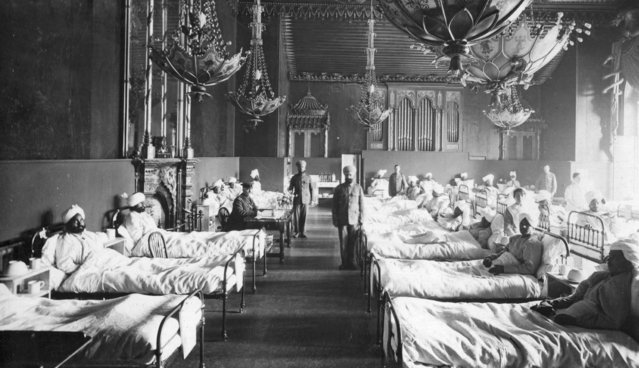
Injured Indian soldiers of the British Army at the Brighton Pavilion, converted into a military hospital, circa 1915. (Photo by Hulton Archive/Getty Images)
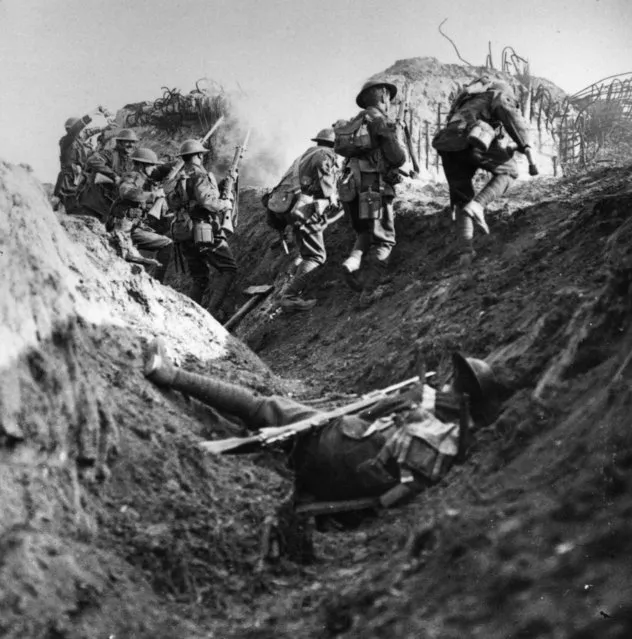
British soldiers in the trenches during World War I, circa 1914. Original Publication: From “Official Series The Great War” – “With dogged courage we overcome stiff resistance and break the Hun lines from Epehy to Bellicourt”. (Photo by Hulton Archive/Getty Images)
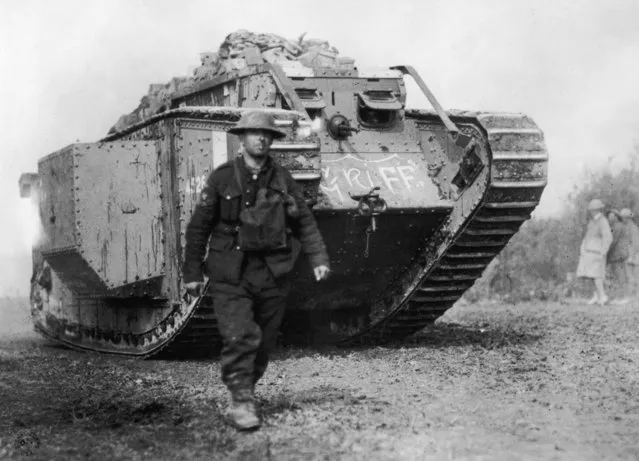
An American soldier walks ahead of an MKIV British-made tank, circa 1918. (Photo by Hulton Archive/Getty Images)
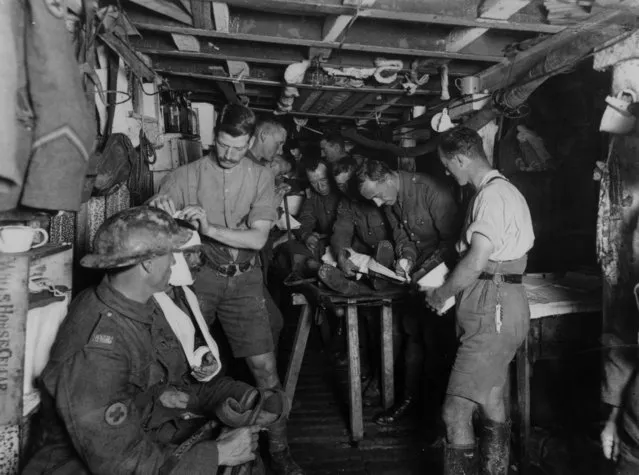
Medical workers bandaging the wounded in a Belgian military camp hospital, circa 1916. (Photo by Hulton Archive/Getty Images)
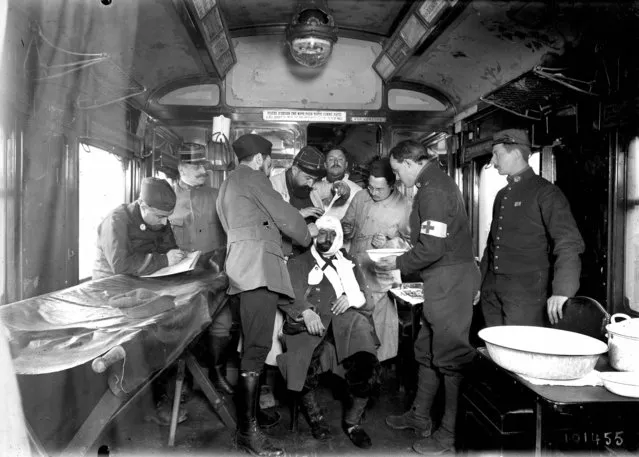
Inside of an operating room in a hospital train. Maintenon (Eure-et-Loir), on 1915. (Photo by Branger/Roger Viollet/Getty Images)
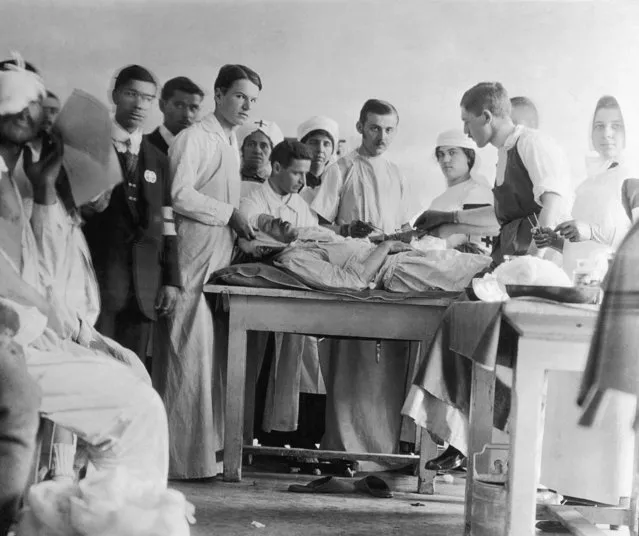
Surgeons operating on a wounded patient in a Serbian hospital during World War I, circa 1916. (Photo by FPG/Hulton Archive/Getty Images)
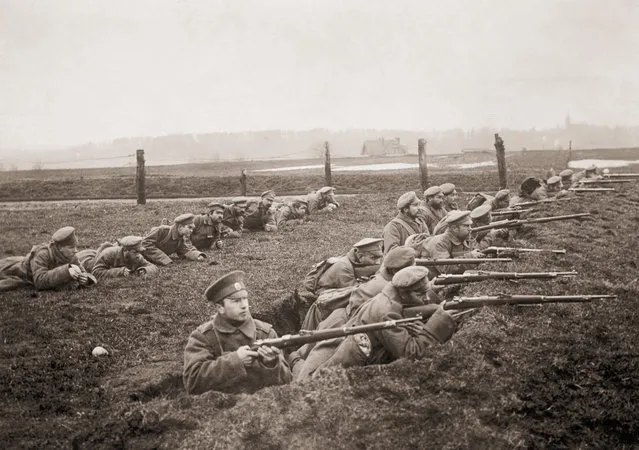
Russian troops firing from a trench near the East Prussian frontier during World War I, circa 1915. (Photo by FPG/Hulton Archive/Getty Images)
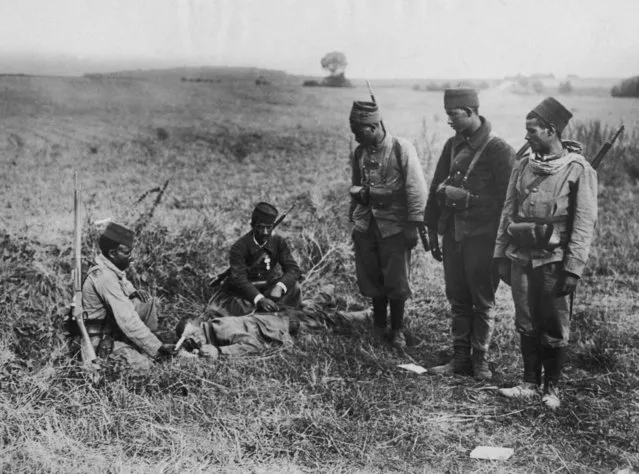
A group of Tirailleurs or “Turcos'”(French colonial infantrymen) offer help to a wounded German soldier after the Battle of the Marne, World War I, circa 1914. (Photo by FPG/Hulton Archive/Getty Images)
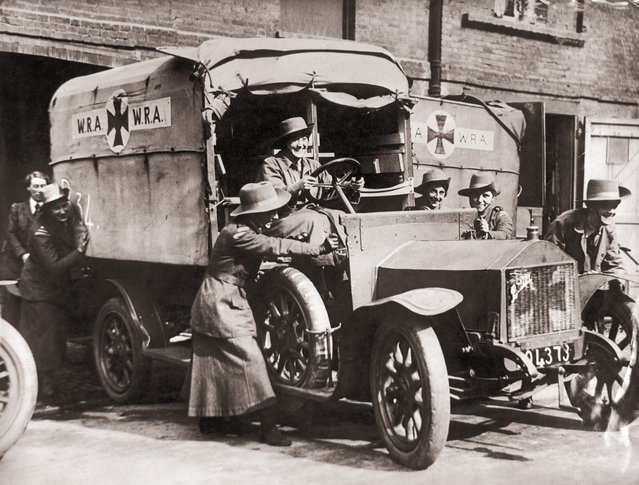
The WRA (Women's Reserve Ambulance) Corps learn to drive an ambulance at a London hospital before serving in France during World War I, circa 1914. (Photo by Paul Thompson/FPG/Getty Images)
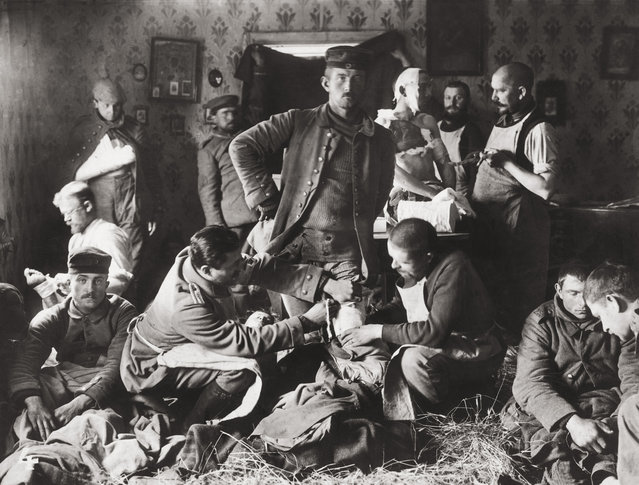
Wounded soldiers at an improvised German field hospital during World War I, circa 1915. (Photo by Paul Thompson/FPG/Getty Images)
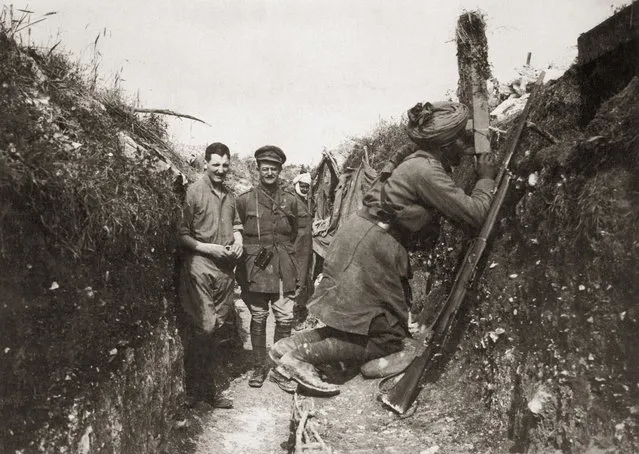
An Indian soldier serving with the British Army keeps watch on the German trenches using a periscope, circa 1916. (Photo by FPG/Hulton Archive/Getty Images)
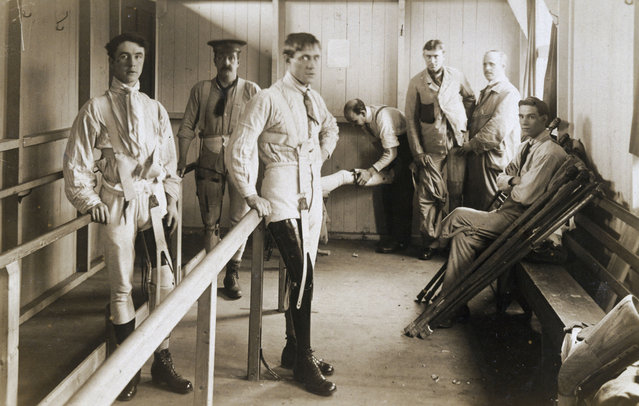
Postcard of British soldiers wearing artificial legs, 1916. The parallel bars are to support the men as they learn to walk with their new limbs. This scene was almost certainly photographed at Queen Mary's Convalescent Auxiliary Hospital, Roehampton, London. This specialised orthopaedic hospital opened in 1915 and was mainly devoted to fitting artificial limbs to British soldiers who lost limbs during World War One, 1914-1918, of whom there were around 240,000. (Photo by SSPL/Getty Images)

A wounded soldier, member of Company K, 110th Regimental Infantry, has a bandage wrapped aournd his face as he receives first aid treatment, Varennes-en-Argonne, France, September 1918. US Army Photo. (Photo by Interim Archives/Getty Images)
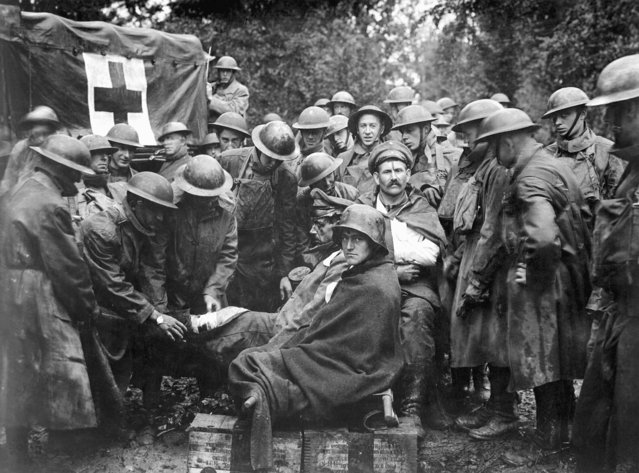
Wounded German prisoners receive medical attention at a first aid station of the 103rd and 104th Ambulance Companies, September 1912. US Army photo. (Photo by Interim Archives/Getty Images)
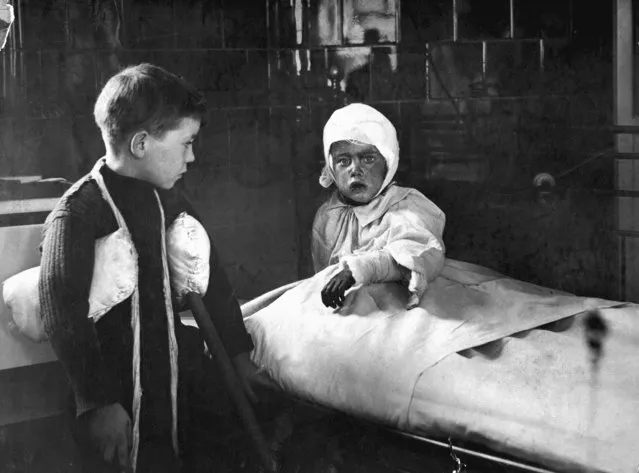
View of school children treated in a hospital after having been wounded during the air raids on London, 1915. (Photo by Interim Archives/Getty Images)
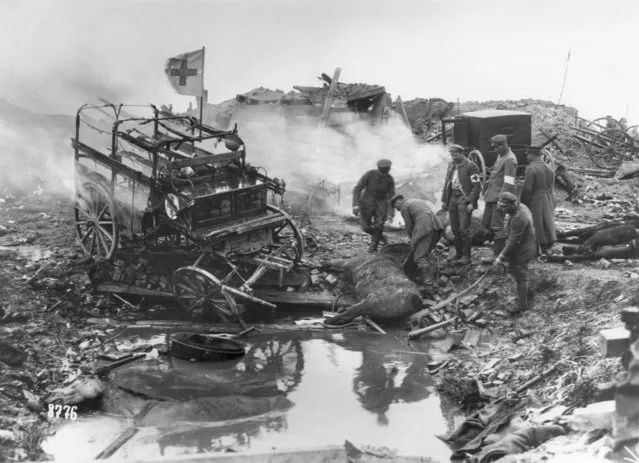
Horse-drawn German ambulances suffer bomb damage, during World War I, 1915. (Photo by Hulton Archive/Getty Images)
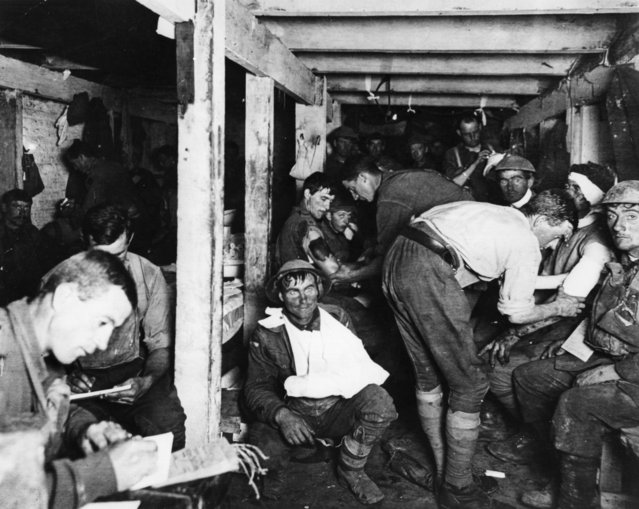
British tommies relaxing and having wounds treated in an underground forward dressing station by the Menin Road in France, 1914. (Photo by Frank Hurley/Three Lions/Getty Images)
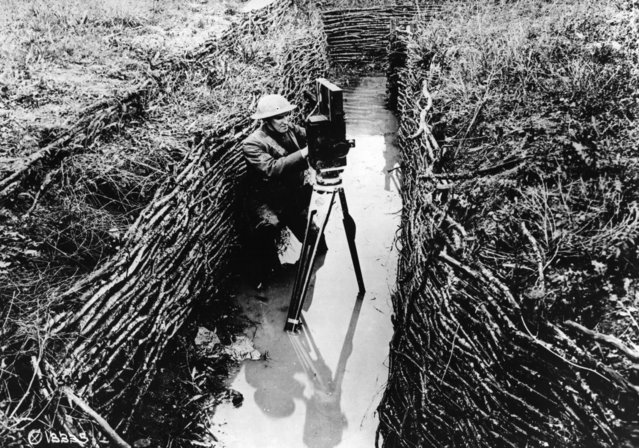
An American cinematographer sets up his camera in a water-filled trench, 1918. (Photo by Hulton Archive/Getty Images)
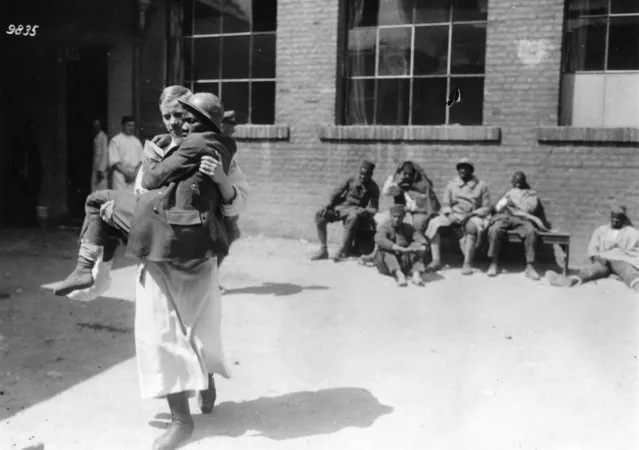
A wounded Senegalese soldier is carried to the surgery by a German nurse, 1915. (Photo by Hulton Archive/Getty Images)
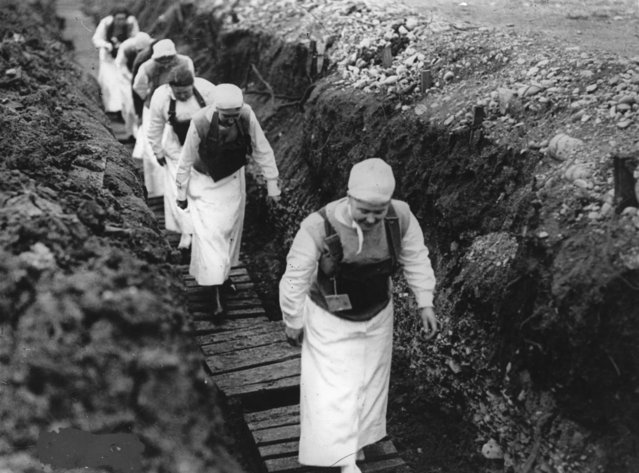
American nurses carrying gas masks walk through a trench in France, 1918. (Photo by Hulton Archive/Getty Images)
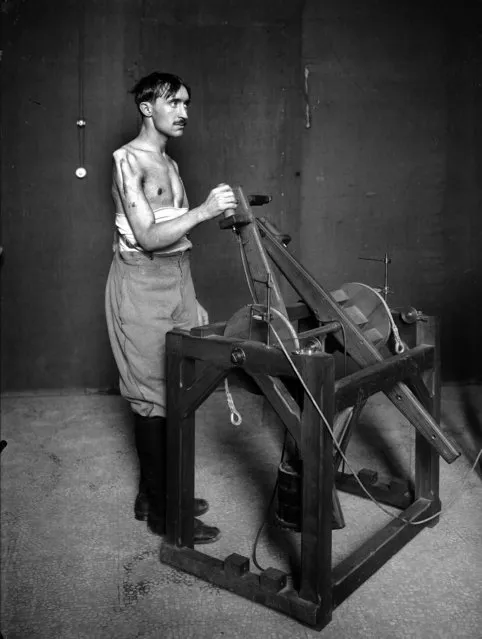
Measure of the force of mutilated members, by means of the psychographe of the professor Amar. France, on 1916. (Photo by Boyer/Roger Viollet/Getty Images)

American Soldiers don Prussian Helmets in Liberty Bond Drive, United States, circa 1918. (Photo by Buyenlarge/Getty Images)
16 Nov 2018 00:05:00,
post received
0 comments
